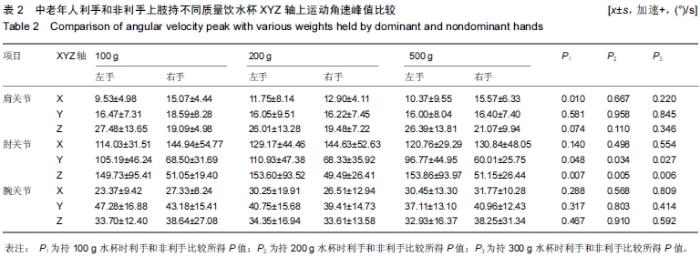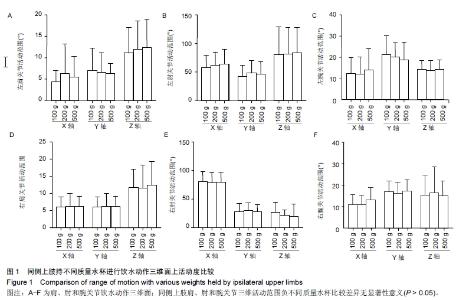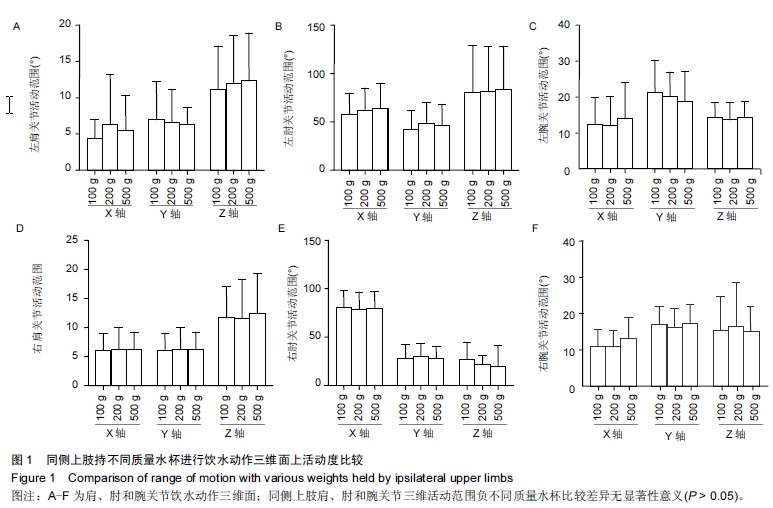| [1] Annett J, Annett M, Hudson PT, Turner A,et al. The control of movement in the preferred and non-preferred hands. Q J Exp Psychol. 1979;31(Pt 4):641-52.
[2] Bagesteiro LB, Sainburg RL. Handedness: dominant arm advantages in control of limb dynamics. J Neurophysiol. 2002; 88(5):2408-21.
[3] Coley B, Jolles BM, Farron A, et al. Estimating dominant upper-limb segments during daily activity. Gait Posture. 2008; 27(3): 368-375.
[4] Chew JZ, Gandevia SC, Fitzpatrick RC. Postural control at the human wrist. J Physiol. 2008;586(5):1265-1275.
[5] Sainburg RL, Kalakanis D. Differences in control of limb dynamics during dominant and nondominant arm reaching. J Neurophysiol. 2000;83(5):2661-2675.
[6] de Niet M, Bussmann JB, Ribbers GM, et al. The stroke upper-limb activity monitor: Its sensitivity to measure hemiplegic upper-limb activity during daily life. Arch Phys Med Rehabil. 2007; 88(9):1121-1126.
[7] Vega-Gonzalez A, Granat MH. Continuous monitoring of upper-limb activity in a free-living environment. Arch Phys Med Rehabil. 2005;86(3):541-548.
[8] Mozaz MJ, Crucian GP, Heilman KM. Age-related changes in arm-hand postural knowledge. Cogn Neuropsychol. 2009; 26(8): 675-684.
[9] Kalisch T, Wilimzig C, Kleibel N, et al. Age-related attenuation of dominant hand superiority. PloS One. 2006;1:e90.
[10] Kilbreath SL, Heard RC. Frequency of hand use in healthy older persons. Aust J Physiother. 2005;51(2):119-122.
[11] Taub E, Uswatte G. Constraint-induced movement therapy: bridging from the primate laboratory to the stroke rehabilitation laboratory.J Rehabil Med.2003;(41 Suppl): 34-40.
[12] Butler EE, Ladd AL, Louie SA, et al. Three-dimensional kinematics of the upper limb during a Reach and Grasp Cycle for children. Gait Posture. 2010;32(1):72-77.
[13] McGinley JL, Baker R, Wolfe R,et al. The reliability of three–dimensional kinematic gait measurements: a systematic review. Gait Posture. 2009; 29(3):360-369.
[14] Manca M, Leardini A, Cavazza S, et al. Repeatability of a new protocol for gait analysis in adult subjects. Gait Posture. 2010; 32(2):282-284.
[15] van Andel CJ, Wolterbeek N, Doorenbosch CA, et al. Complete 3D kinematics of upper extremity functional tasks. Gait Posture.2008;27(1):120-127.
[16] Petuskey K, Bagley A, Abdala E, et al. Upper extremity kinematics during functional activities: Three-dimensional studies in a normal pediatric population. Gait Posture. 2007; 25(4):573-579.
[17] Butler EE,Rose J. The Pediatric Upper Limb Motion Index and a temporal-spatial logistic regression: Quantitative analysis of upper limb movement disorders during the Reach & Grasp Cycle. J Biomech. 2012;45(6):945-951.
[18] Chen W, Xiong C, Huang X, et al. Kinematic analysis and dexterity evaluation of upper extremity in activities of daily living. Gait Posture. 2010;32(4): 475-481.
[19] Aizawa J,Masuda T,Koyama T, et al. Three-dimensional motion of the upper extremity joints during various activities of daily living. J Biomech. 2010;43(15):2915-2922.
[20] Mackey AH, Walt SE, Lobb GA, et al. Reliability of upper and lower limb three-dimensional kinematics in children with hemiplegia. Gait Posture. 2005;22(1):1-9.
[21] de los Reyes-Guzmán A, Dimbwadyo-Terrer I, Trincado- Alonso F, et al. Quantitative assessment based on kinematic measures of functional impairments during upper extremity movements: A review. Clin Biomech. 2014;29(7):719-727.
[22] Molina Rueda F, Rivas Montero FM, Pérez de Heredia Torres M, et al. Movement analysis of upper extremity hemiparesis in patients with cerebrovascular disease: a pilot study. Neurologia. 2012;27(6):343-347.
[23] Slavens BA, Harris GF. The biomechanics of upper extremity kinematic and kinetic modeling: applications to rehabilitation engineering. Crit Rev Biomed Eng. 2008;36(2-3):93-125.
[24] Magermans DJ, Chadwick EK, Veeger HE, van der Helm FC. Requirements for upper extremity motions during activities of daily living. Clin Biomech. 2005;20(6):591-599.
[25] Van Hoof T, Vangestel C, Shacklock M, et al. Asymmetry of the ULNT1 elbow extension range-of-motion in a healthy population: consequences for clinical practice and research. Phys Ther Sport. 2012;13(3):141-149.
[26] Cooper JE, Shwedyk E, Quanbury AO, et al. Elbow joint restriction: effect on functional upper limb motion during performance of three feeding activities. Arch Phys Med Rehabil. 1993; 74(8):805-809.
[27] Werner FW, An KN. Biomechanics of the elbow and forearm. Hand Clin.. 1994:10(3):357-373.
[28] Earles DR, Judge JO, Gunnarsson OT. Velocity training induces power-specific adaptations in highly functioning older adults. Arch Phys Med Rehabil. 2001;82(7):872-878.
[29] Henwood TR, Taaffe DR. Improved physical performance in older adults undertaking a short-term programme of high-velocity resistance training. Gerontology. 2005; 51: 108-115.
[30] Bottaro M, Machado SN, Noqueira W, et al. Effect of high versus low-velocity resistance training on muscular fitness and functional performance in older men. Eur J Appl Physiol. 2007;99(3):257-264.
[31] Sainburg RL. Evidence for a dynamic-dominance hypothesis of handedness. Exp Brain Res. 2002;142(2):241-258.
[32] Katz RT, Rymer WZ. Spastic hypertonia: mechanisms and measurement. Arch Phys Med Rehabil. 1989;70(2):144-55.
[33] Gottlieb GL, Song Q, Hong DA, et al. Coordinating two degrees of freedom during human arm movement: load and speed invariance of relative joint torques. J Neurophysiol. 1996;76(5):3196-206.
[34] Kee D, Na S, Chung MK. Effect of external load at varying hand positions on perceived discomfort. Int J Occup Saf Erqon. 2013;19(3):397-408.
[35] Glenn JM, Gray M, Binns A. The effects of loaded and unloaded high-velocity resistance training on functional fitness among community-dwelling older adults. Age Ageing. 2015;7(11):1-6.
|





